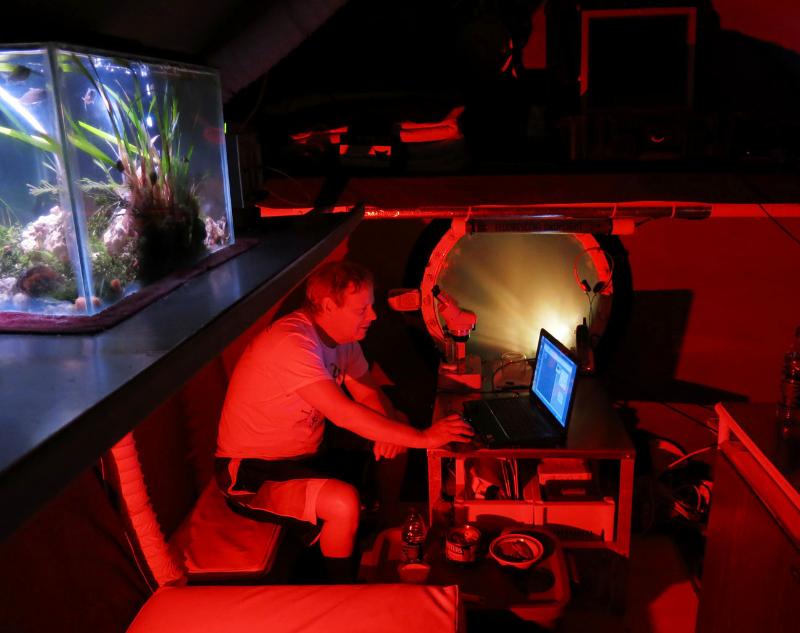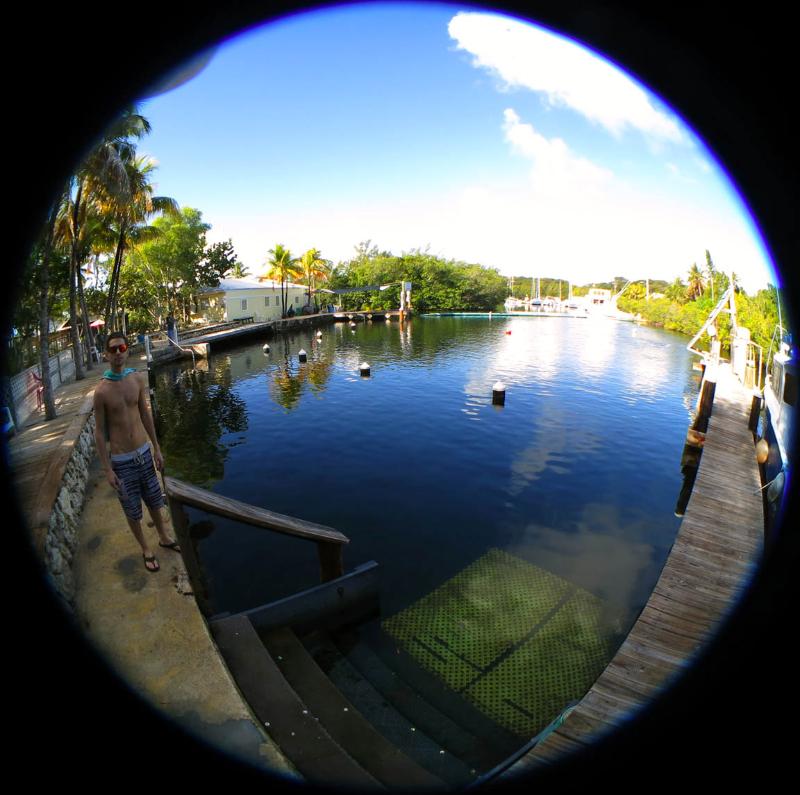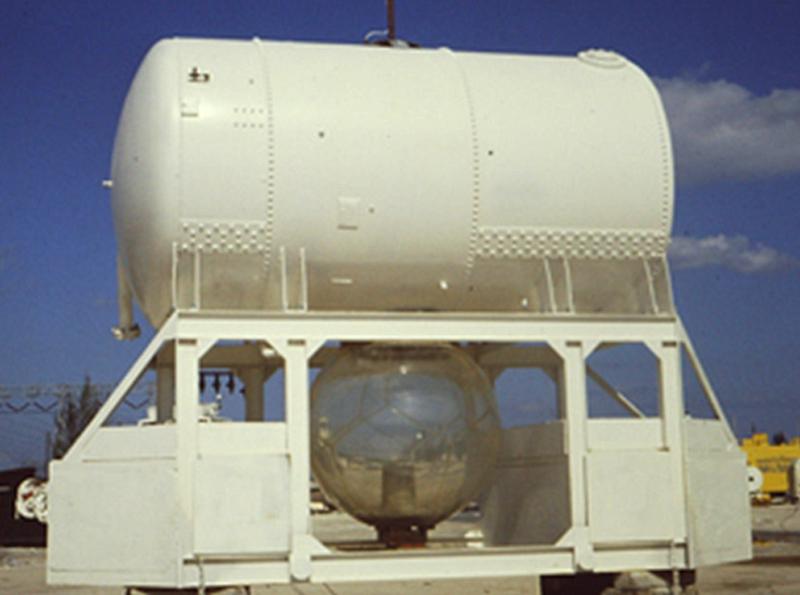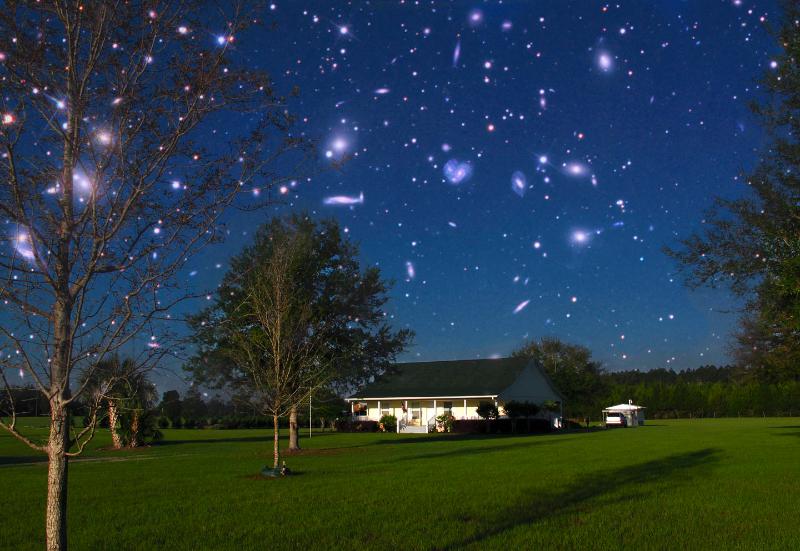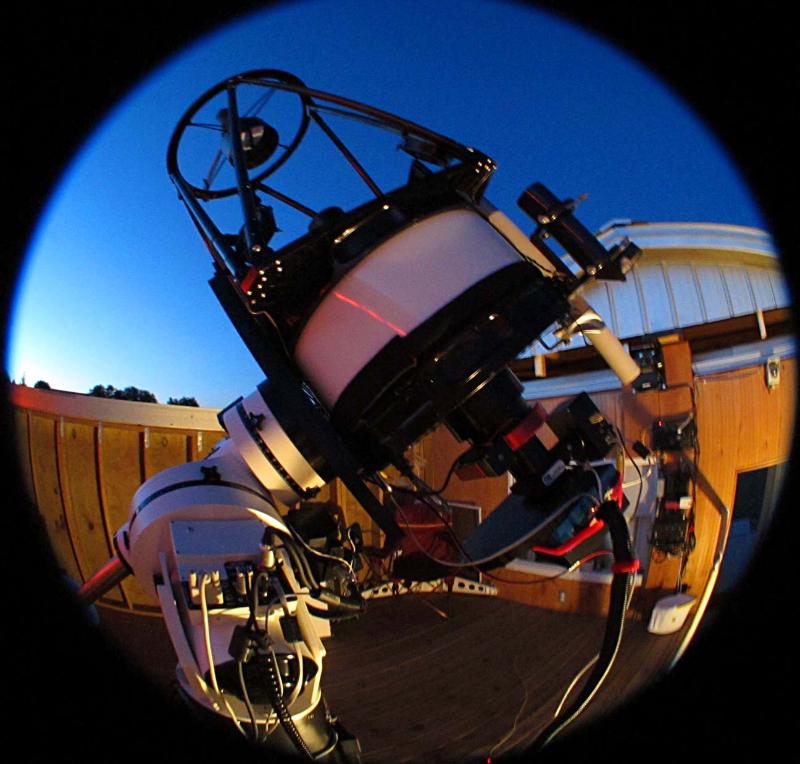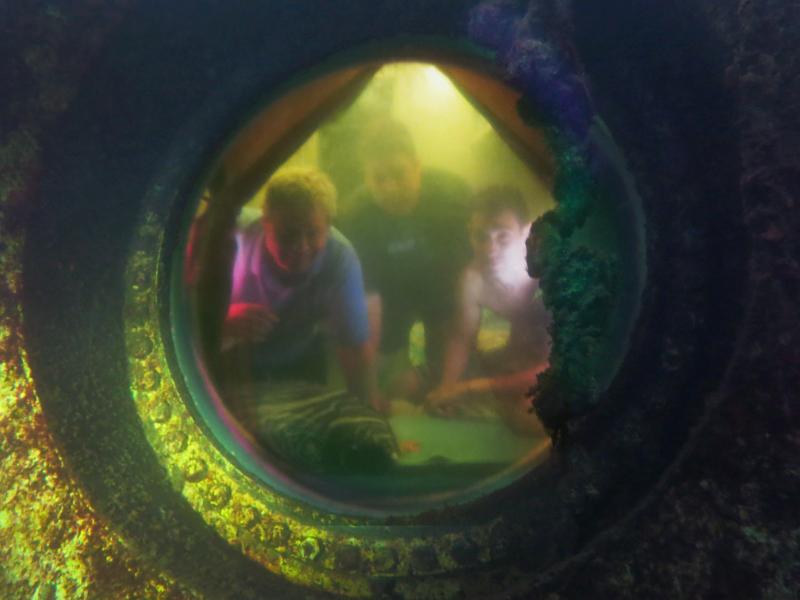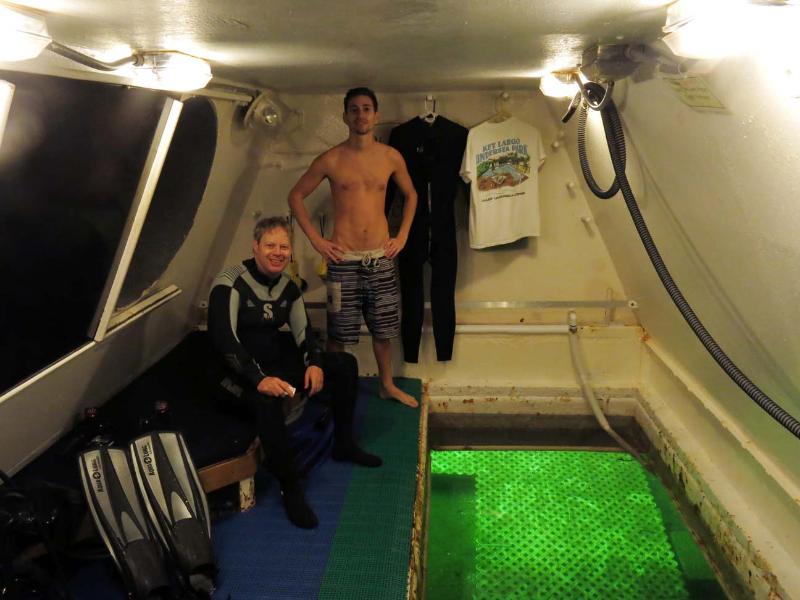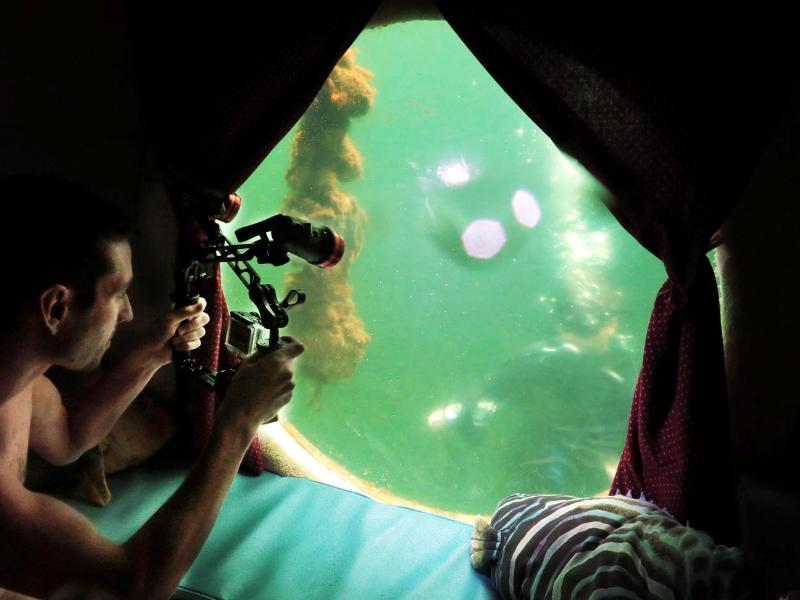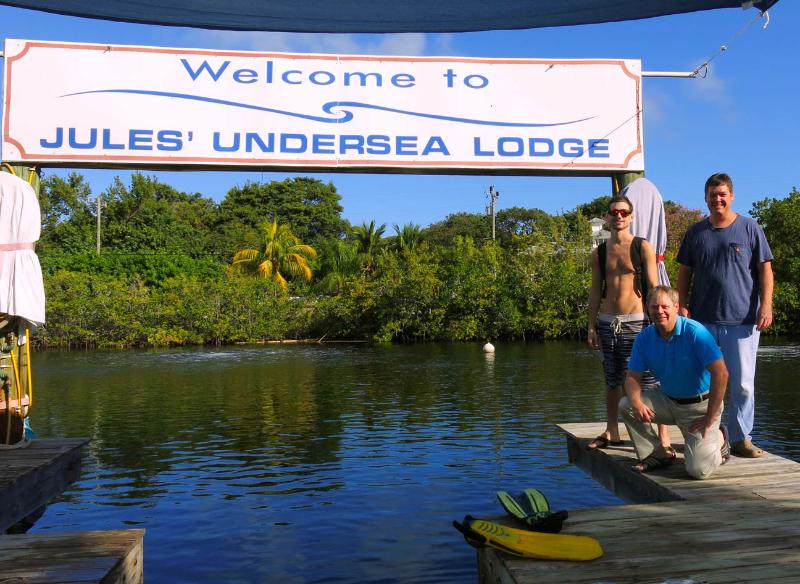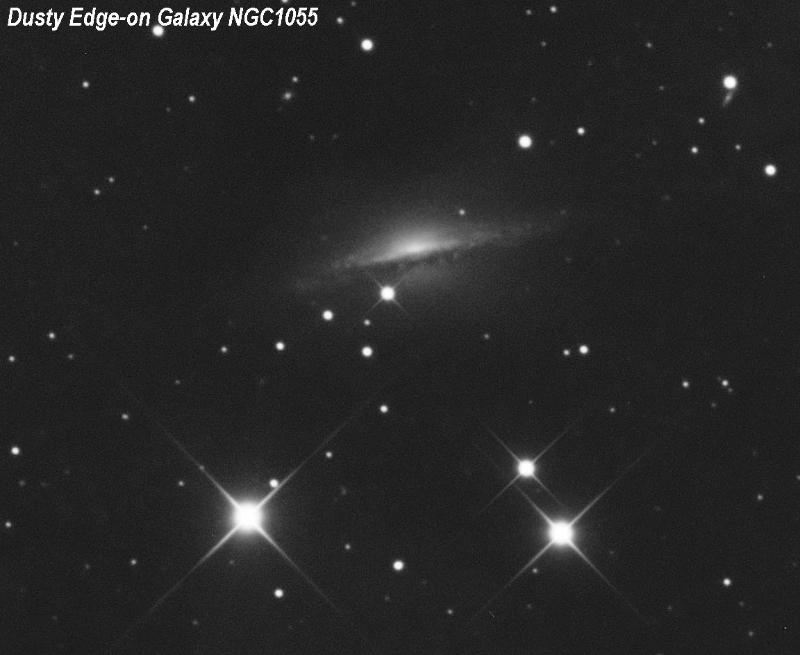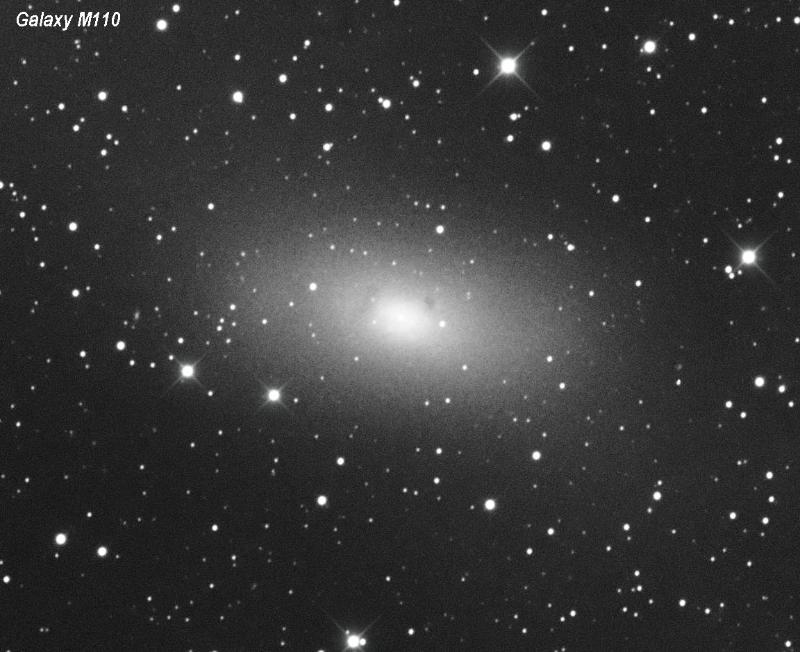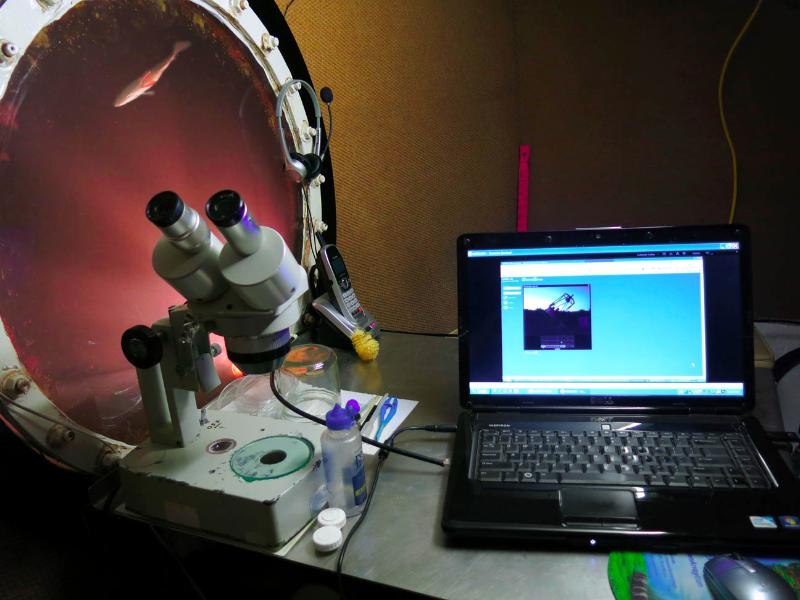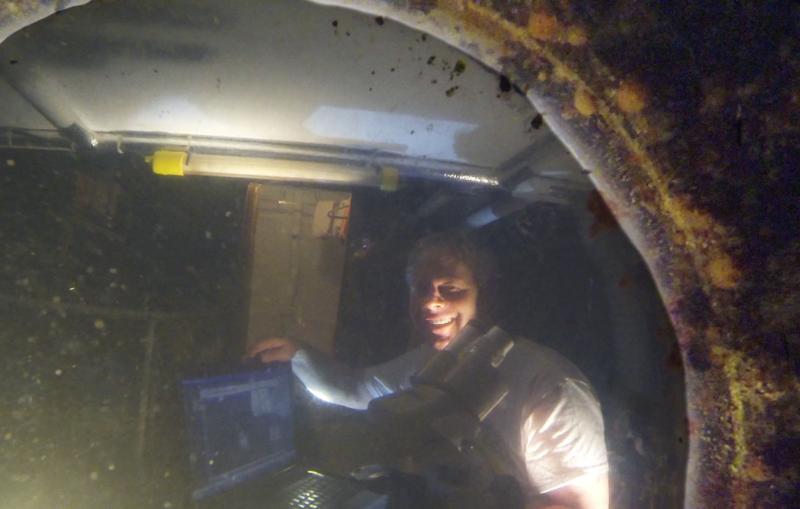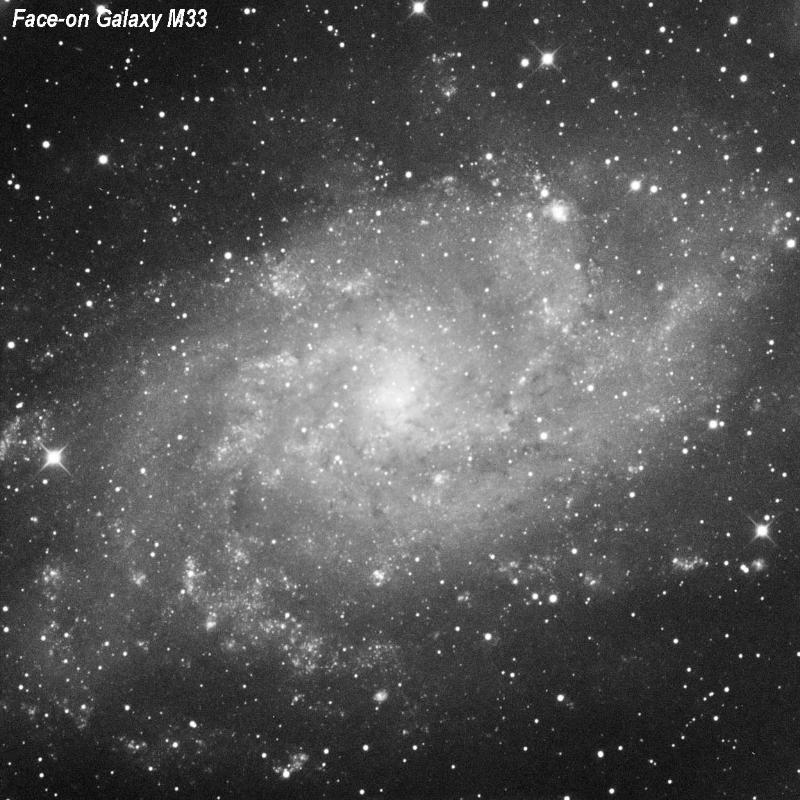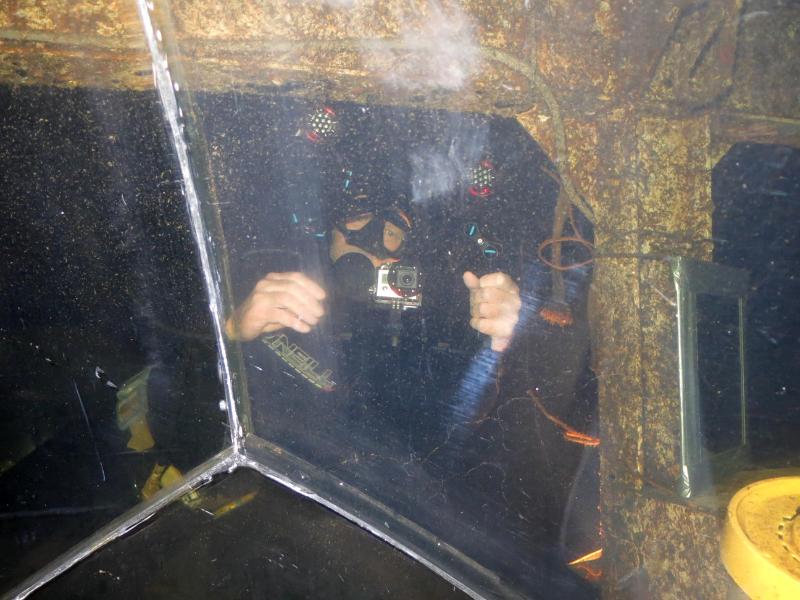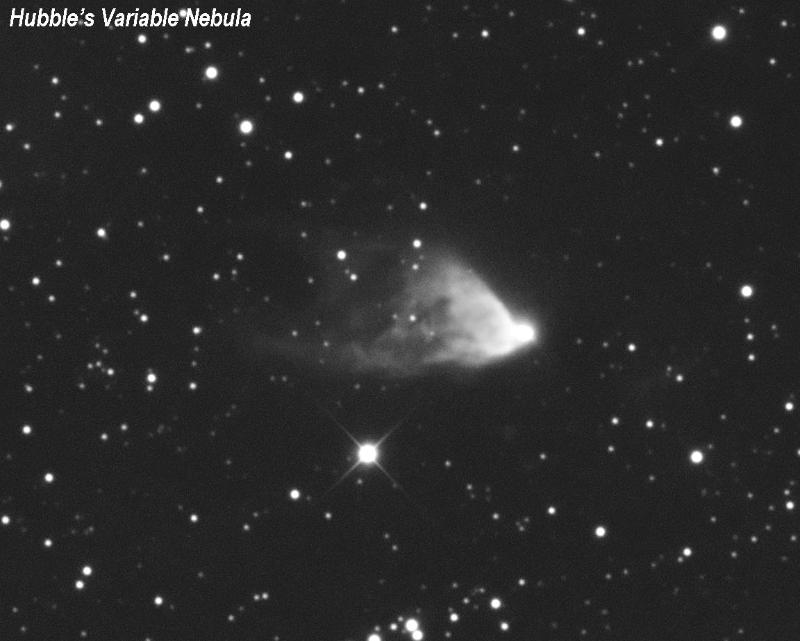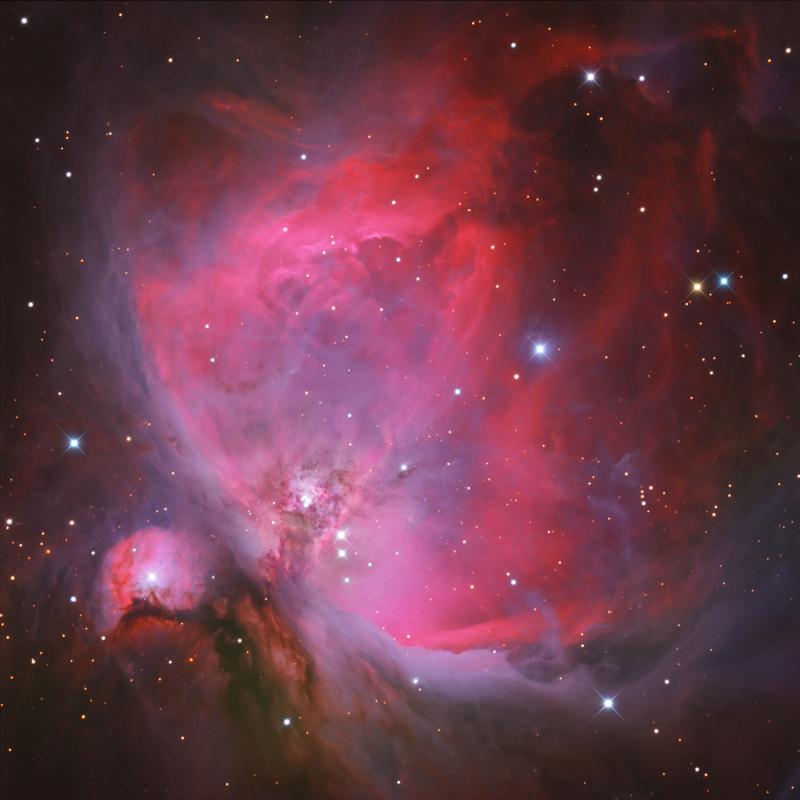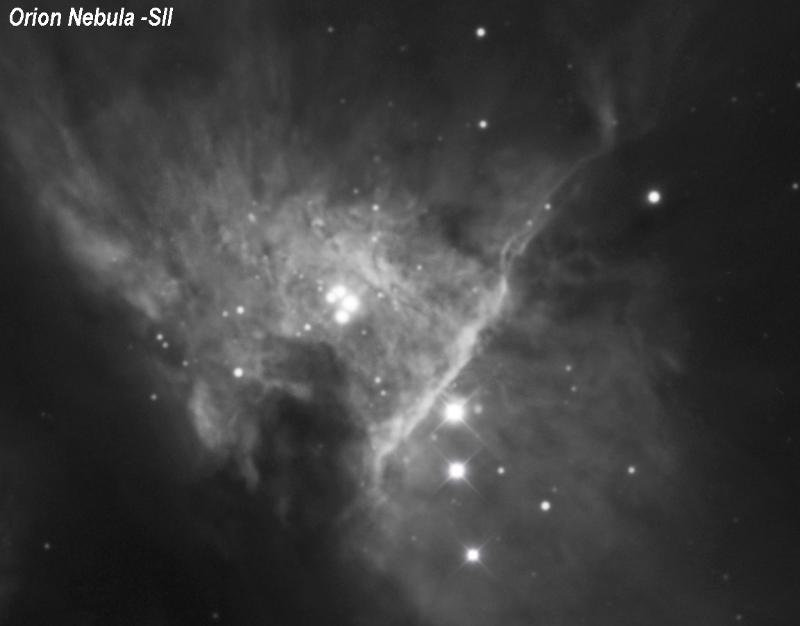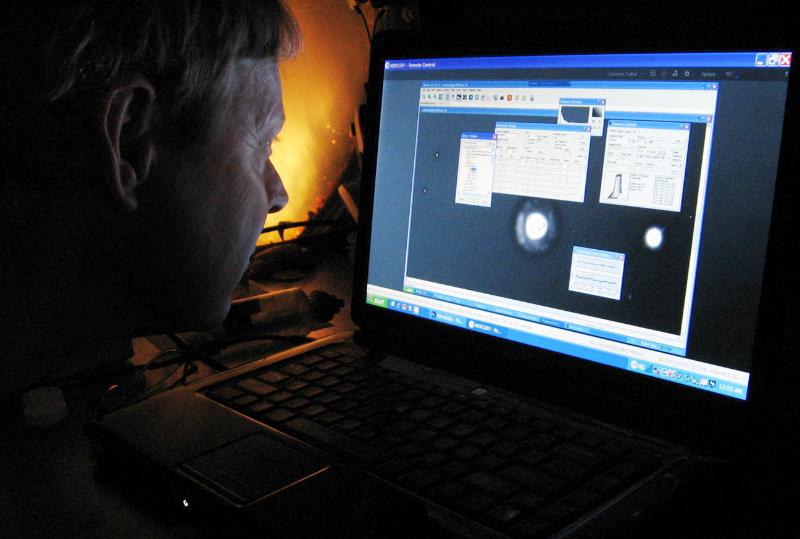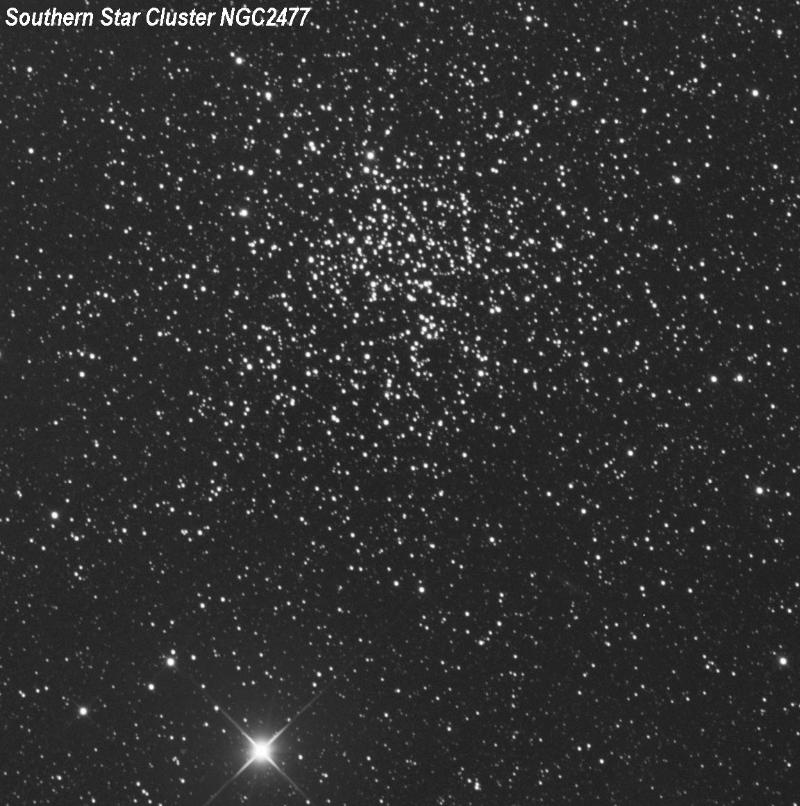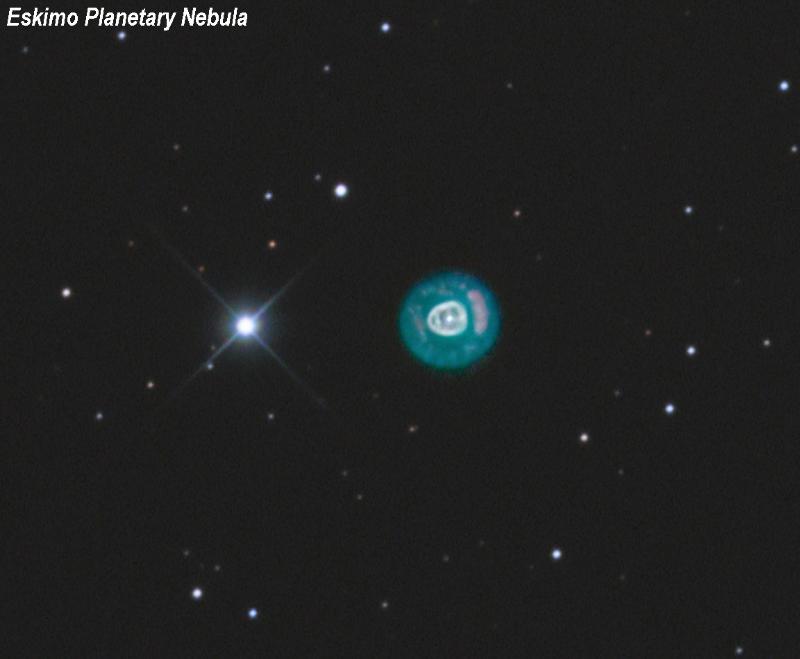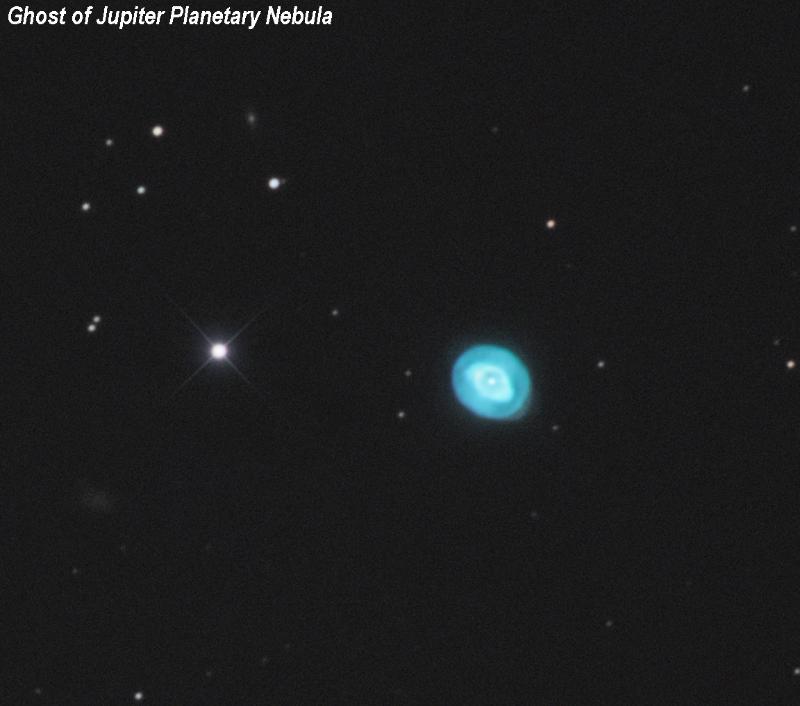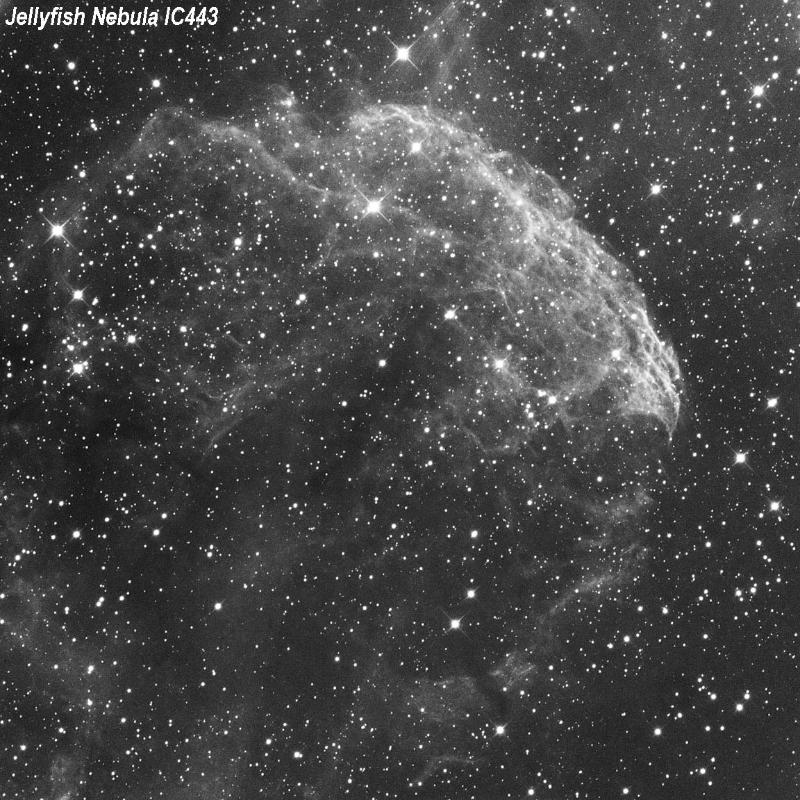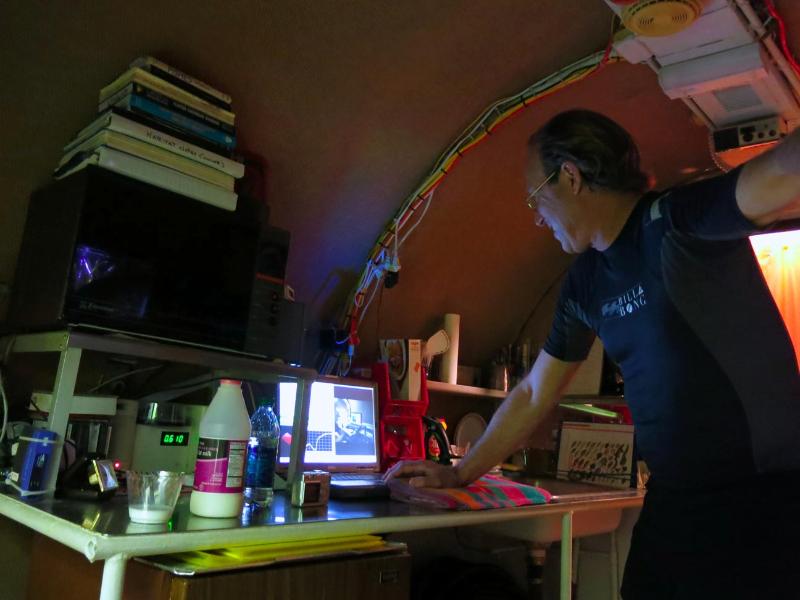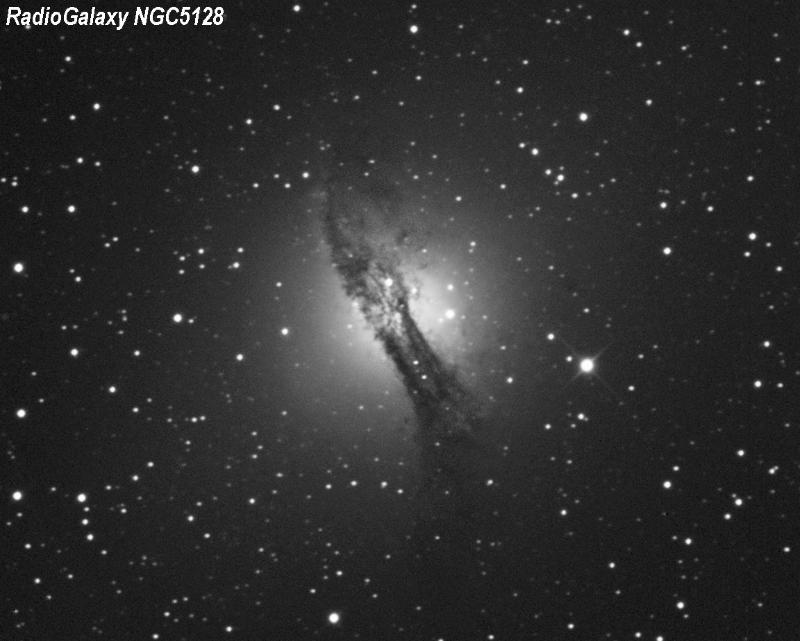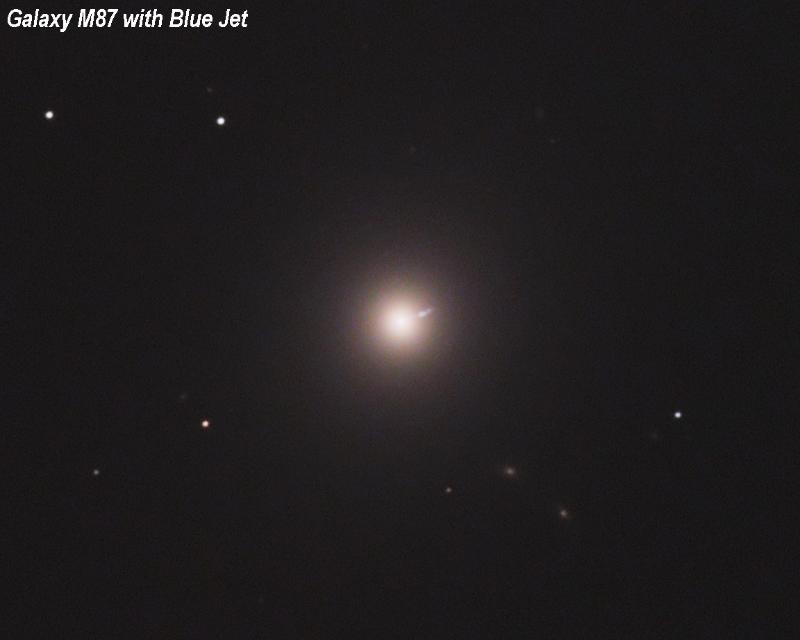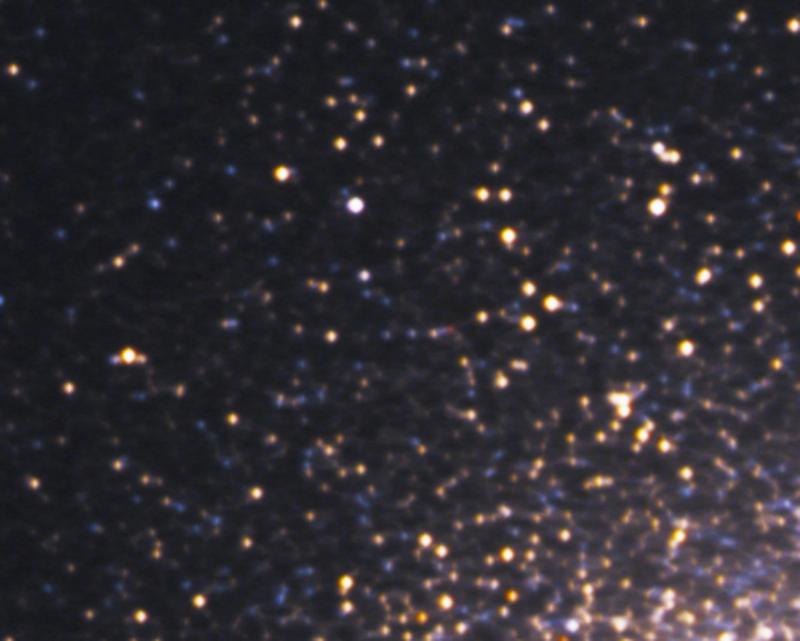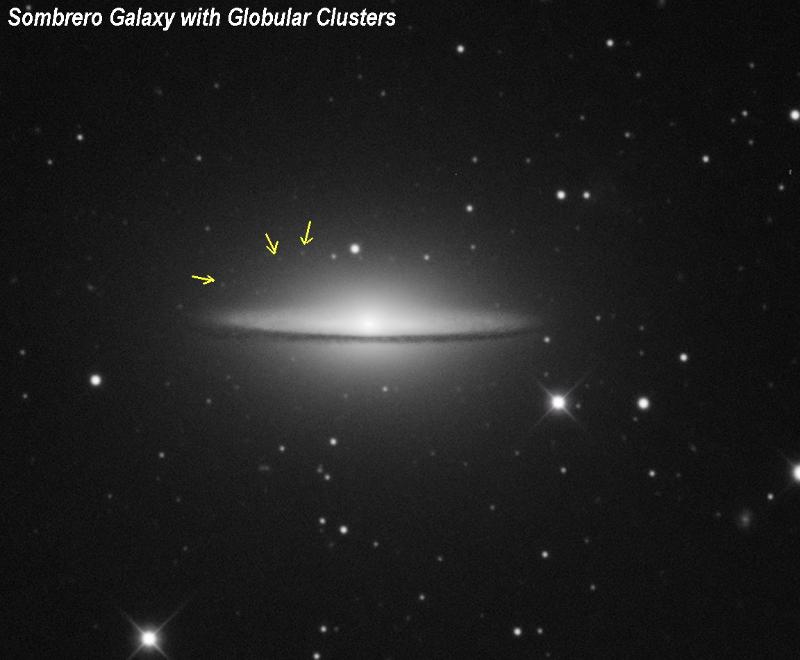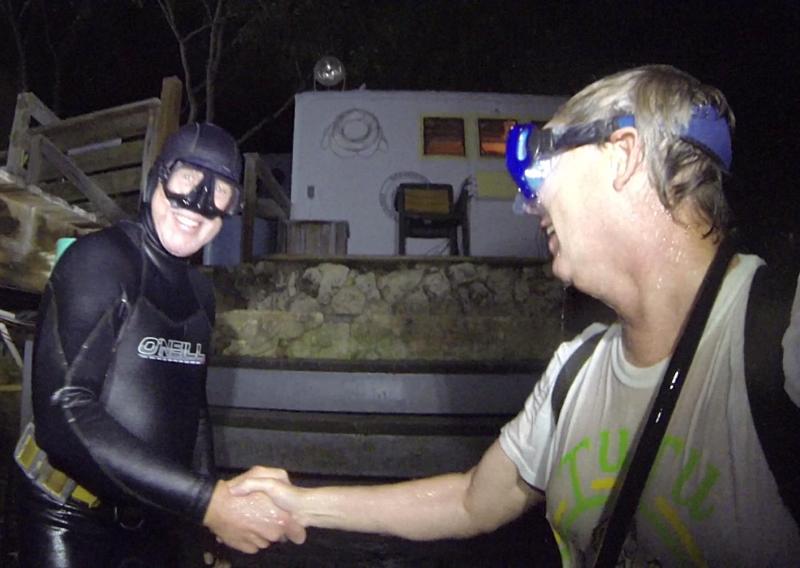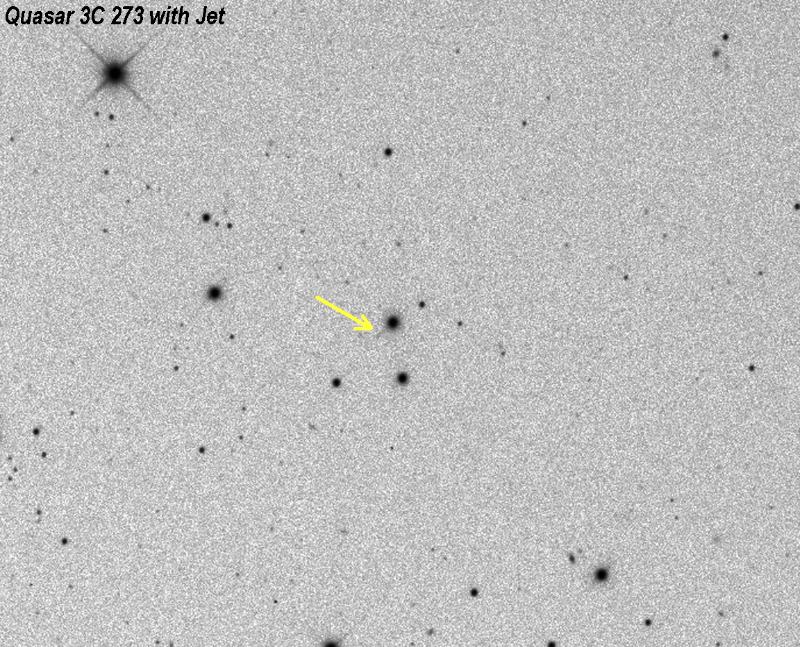A number of people have asked me how the 2014 Florida Keys Winter Star Party was – after all, it was a landmark 30th anniversary of this venerable astro-event. I tell them in a word: “wet”!!
Imaging from inside MarineLab – See the images here or continue reading
They figure I meant the weather was lousy and rainy. But, in fact, it was just the opposite – gorgeous warm, clear and steady almost all week which meant scuba diving during the day and observing deep southern objects including the Southern Cross, Keyhole Nebula, and Omega Centauri after dark. But it was wet for me because most of my imaging during the star party was performed by accessing my Chiefland Observatory about 400 miles away from a underwater habitat called MarineLab submerged 25 feet underwater in Key Largo. MarineLab is a steel structure built by the midshipmen of the US Naval Academy as an exercise in oceaneering that has ended up in a lagoon in Key Largo serving for about 3 decades as an educational venue for saturation divers and marine biologists. The structure is composed of a surplus water tank 16 feet long by 8 foot in diameter with an acrylic sphere underneath I affectionately call the “womb”.
Having scuba dived the MarineLab a month ago, I wanted to combine my two hobbies (astronomical and underwater photography) so I carefully picked the perfect night (Friday night, Mar. 1) when it was awesomely clear and dry at Chiefland and during a night when the underwater Lab was available. I was greeted by longtime MarineLab Director and marine biologist Chris Olstad in his wetsuit at sunset and within minutes we were descending using hookahs and weighted-watertight suitcases, holding my new laptop, to innerspace 25 feet down where we would study the heavens. The lagoon in which the Lab sits is full of tropical fish, a great variety of invertebrates and even an ROV (remote operated vehicle) with which Chris surprised us on our first visit!
We descended down to the lab entering through a small porthole on the bottom, donned our gear, dried off and assessed the integrity of the laptop (Luckily OK!), we were opening the observatory using the internet via LogMeIn on my laptop and equilibrating the telescope which sat 400 miles away in Chiefland, FL. At the same time, we were witnessing shrimp scampering about the porthole window trying to escape the hungry fish. By 3AM, the same fish came by with BIG bellies full of shrimp! I guess the Lab lights attracted the shrimp and made them visible and easy pickings for the snappers! Once inside the habitat around 7PM, and having hooked up the new solid-state hard drive laptop up to the internet cable, we were thrilled that the connection was good and we could communicate with the observatory via internet! We began with the Andromeda Galaxy, which has two bright satellite galaxies: M32 and M110. We did great on both as well as capturing the southwest arm of the Andromeda Galaxy. M33 is a face-on galaxy while NGC1055 is edge-on. Notice all the dust in Andromeda – even Andromeda satellite galaxy M110 has some dust! The Uranus image does show several moons but the resolution is poor due to the low elevation of Uranus at that time looking through 3.69 atmospheres in the west! Regardless, we were able to ferret out Uranus’s satellites Oberon, Titania and Ariel as well as an incidental background faint galaxy NGC202! Uranus was a great place to start our astrosafari …. relatively close to home!
We made a great effort on the Orion Nebula taking LRGB images as well as a narrowband sulfur (SII) images! The trapezium in the deep interior is a group of hot stars powering the Orion Nebula! The trapezium is well seen in a number of our exposures, especially in the narrowband SII image. At 10PM, after soaking down the Orion Nebula, we stayed in the constellation Orion imaging the Flame Nebula (NGC2024) which is an imaging challenge because it includes bright bluish star zeta Orionis which is one the three bright stars in Orion’s belt. That star created color round artifacts seen in the upper left of the image. Artificial satellites can be seen running through the image when red and green filters were being used. We also imaged a star cluster NGC2169 that coincidentally resembles “37”. We continued on to the Hubble’s Variable Nebula (NGC2261) which looks like a comet but is a reflection nebula. Two images of the Rosette Nebula were next, one with a clear filter and the other with ahydrogen-alpha filter showing well-defined dark Bok globules and tendrils standing out against a bright emission nebula with suppressed stars. The hydrogen-alpha filter used for the narrowband Rosette Nebula image has a bandpass of only 5nm centered on 656nm (red), the wavelength at which ionized hydrogen (H-alpha) emits (which is the predominate emission of many nebula) and provides tremendous contrast by excluding all other wavelengths of light.
After 11PM, we were just getting cooking as we went south to capture a dying star planetary ring nebula NGC2438 superimposed on a large open star cluster M46. Another open star cluster deep in the southern skies is NGC2477 in the constellation Puppis. The Eskimo Nebula is a dying star planetary nebula resembling an eskimo – also called the “Clown Face” Nebula. Of course, we had to violate the Jellyfish Nebula (IC443) which is a supernova remnant in Gemini. I felt it only fitting to photograph a ‘jellyfish’ while 5 fathoms deep! Moving from object to object we banked all sorts of data documenting a variety of celestial bodies. After midnight, we ventured close to home imaging Jupiter and its four Galilean satellites. Jupiter has many more moons but they were too faint for us to capture. Coincidentally, we next went to a planetary nebula called the “Ghost of Jupiter” NGC3242 which, I guess, someone thought resembles an out-of-focus Jupiter. This is a small object in which we got some decent detail, like the Eskimo Nebula, another small but bright planetary (dying star) nebula. Next we visited the northern Cigar Galaxy M82 which just had a supernova event discovered one month before our MarineLab effort. I unknowingly took a pre-discovery image of this supernova in early January 2014 as part of my preparation for this MarineLab expedition and did not recognize that the supernova was there at the time or I would have been the discoverer!
Late this night, we went from Saturn, 75 light-minutes away, to a quasar 2.4 BILLION light-years away! The Saturn image shows the planet overexposed to reveal the moons which are identified on the image. Other moons are lost in Saturn’s glare. I added an inverted image of Saturn we took in the overexposed blob for size perspective. Saturn’s brightest moon, Titan, is the only Solar System moon with a dense atmosphere. Next, we toured far south capturing giant globular cluster Omega Centauri (NGC5139) which was our southernmost object, greatly affected by turbulent atmosphere. We were imaging through 4.39 atmospheres to capture this image so the stars in the close-up are of poor quality. Nevertheless, you can see the yellow and blue stars that compose the bulk of the globular stellar population. At this point, Chris made a night dive peering at me through the MarineLab porthole watching me download the globular cluster images as fish full of shrimp surrounded him! While the Omega sequence was happening, I made a trip into the acrylic bubble under the Lab for a video/photo op by diver Chris. Once back at our stations, we studied a peculiar galaxy near Omega Centauri that is a strong radio source which may represent a collision of two galaxies with a big dust band (NGC5128) also very low in Centaurus. Crazy as it was, we next pointed the telescope (barely over the observatory roof) to the extreme southeast to see an object in the summer Milky Way as it rose, namely the dark nebula B72 or Snake Nebula. At this point, Chris got very excited about tackling the summer stuff but I was getting exhausted and the gable of my observatory roof (which opens to the east) greatly hindered us from going there anyway. So, lastly, we went to two very distant objects. Abell2151 is a galaxy cluster 500 Million light-years away in the constellation Hercules. We did a 5 minute exposure and the inverted version shows a great galaxy morphologic bonanza! But that galaxy cluster was close compared to our last object captured a 4:17AM. Quasar 3C 273 is 2.4 Billion light-years away and even showed us her optical jet! With that, we called it a night, warmed up the CCD camera, parked the telescope, closed up the observatory (all remotely, of course) and made a night dive to the surface 25 feet up where were greeted by the rising summer Milky Way and a warm breeze. Not bad for one night’s effort! We both had cosmic dreams. Mission – accomplished!
Click HERE to view all images taken during the underwater remote astroimaging adventure.
